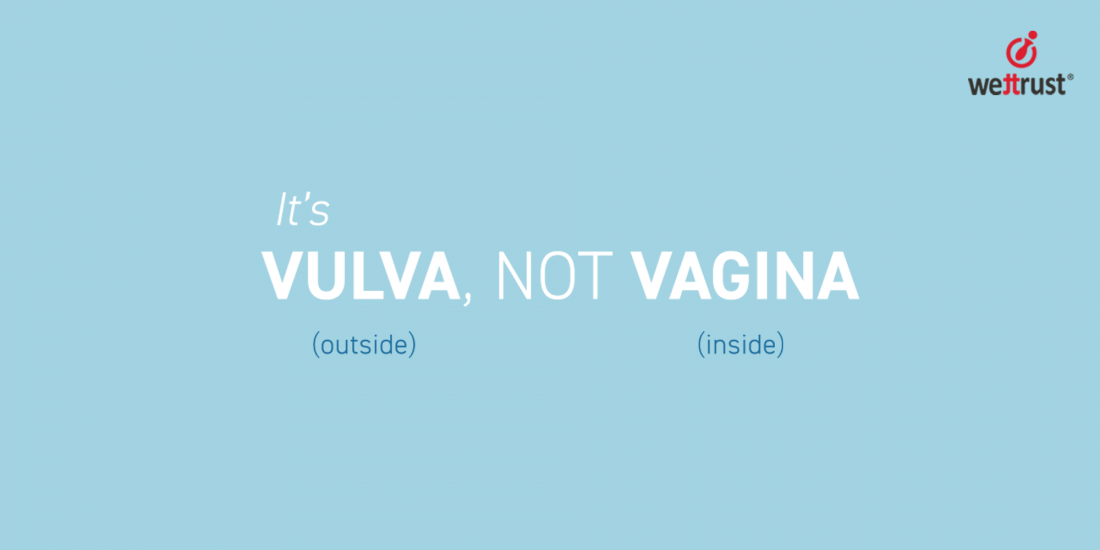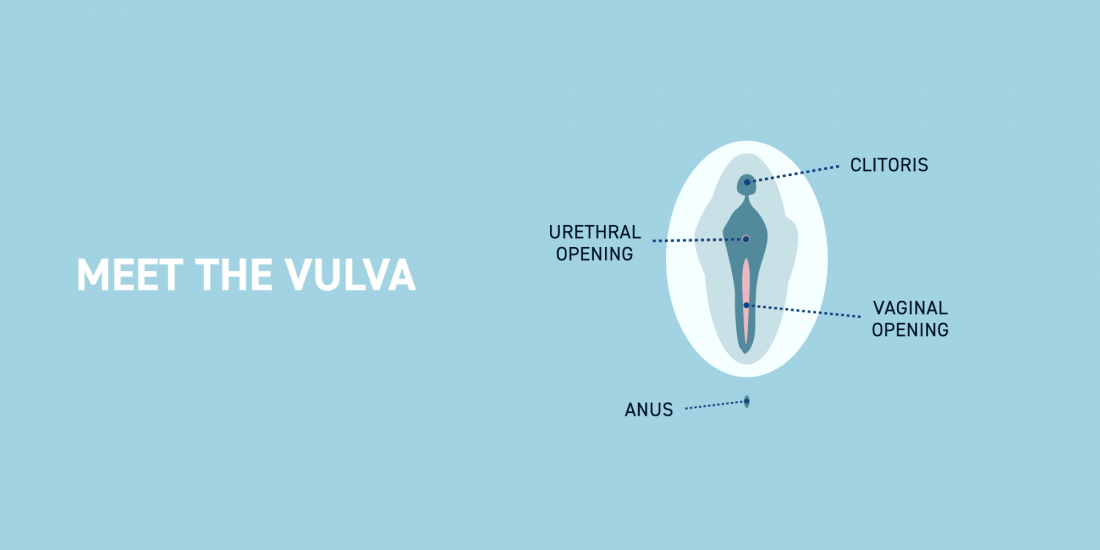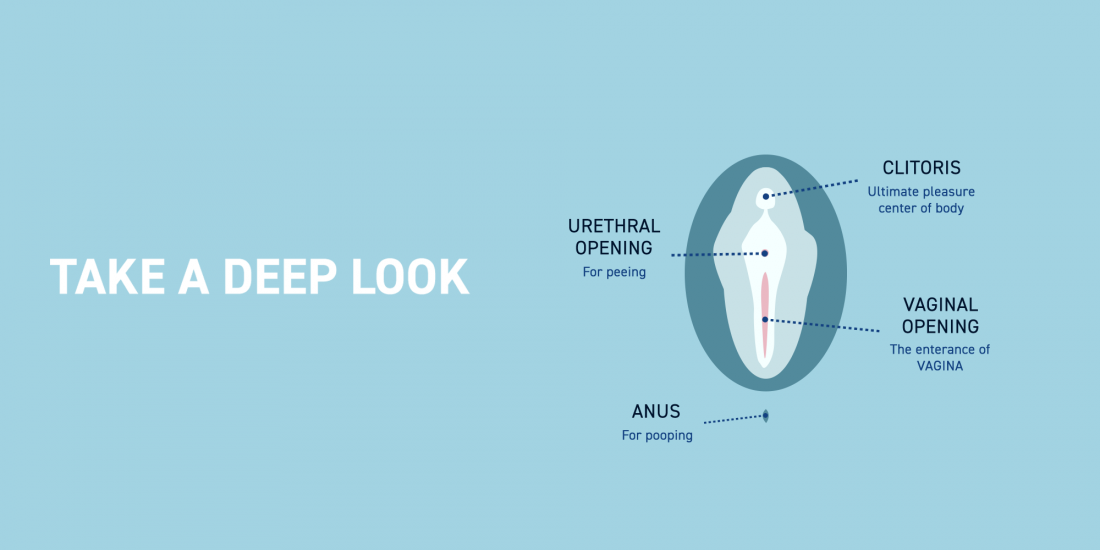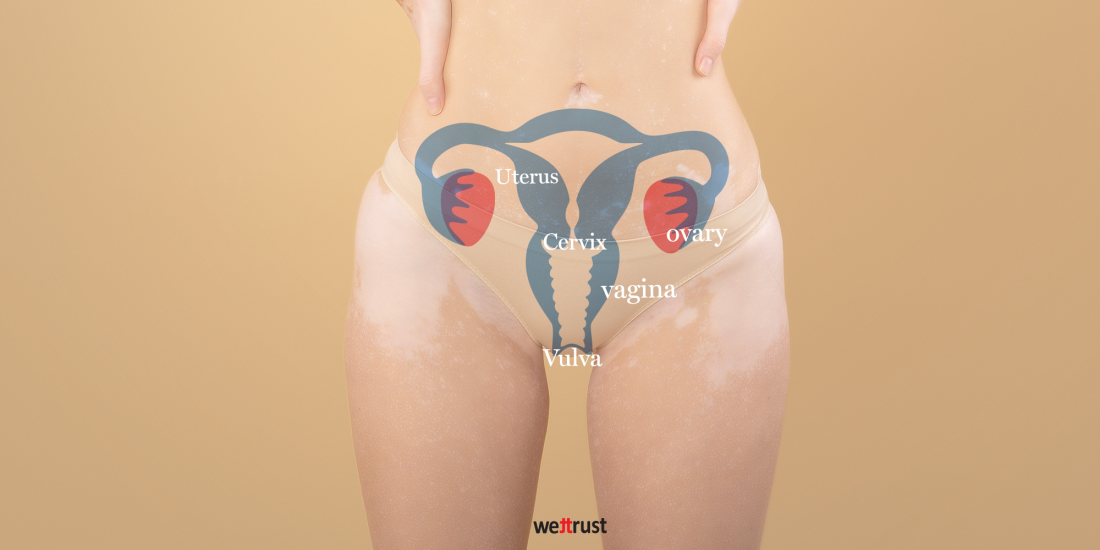HEALTH INFORMATION
[ VULVOVAGINAL
ANATOMY AND HOW IT ACTUALLY WORKS ]

“Lady garden,” “intimate area,” “vajayjay,” “girly bits,” “private parts” are
countless words that refer to the vagina and it seems a lot of us are confused
about what's really going on down there.
We often use the term “vagina” to
refer to the entire female genital region between legs – but this is totally
incorrect. According to research by Bodyform, 74% women don’t know the
difference between the “vulva” and “vagina.” Most of us use “vagina” as the
catch-all phrase, but to pave the way to vaginal and vulva health, we ought to
know which is which.

The vulva is the correct name for
the EXTERNAL parts of the female genitalia, including the clitoris, opening of
the urethra and vagina and the surrounding tissue. The Vagina is the INTERNAL
part – the inside part that works as a tube connecting the vulva and cervix.
Here’s a must-know list about
vaginas :
l The vagina connects the vulva to the
cervix.
l There are three holes down there – the
urethral opening for peeing, the anus for pooping, and the vagina.
l Each woman’s vulva has a unique size,
color, and appearance.
l It is normal that there are
noticeable differences between the left and right side of the vulva.
[Let’s start from the outside of your body, where the “VULVA” is]

The vulva is ther term for women’s external sexual organs. The vulva is the whole area from the pubic mons (the pad of tissue covered by hair) to the anus. The vulva includes the outer lips (labia majora), inner lips (labia minora), the clitoris, the urethral and vaginal openings, and the area between the vagina and the anus called the perineum.
You can find three holes in the vulva area:
l Urethra
opening. Located
a little below your clitoris, this is the hole that you pee out of.
l Vaginal
opening. Where
menstrual blood leaves your body, where babies come out of (sometimes – C-sections
happen ~32% of the time), and where sex toys, penises, and fingers can
potentially go inside.
l Anus. Where the
gastrointestinal tract ends and exits the body, also the opposite end of an
animal’s digestive tract from the mouth.
A healthy vulva looks and feels like your own
personal baseline and does not have itching, lesions, or abnormal discharge. As
the vagina naturally sheds every four hours during a person’s reproductive
years, it is normal that discharge is present, but when it comes to smelly,
weird-color ones, you might want to check your vaginal health balance.
[Starting point of the inside
of your body – the gate to the internal parts of the reproductive system, where
the “VAGINA” is]

Once you travel through the vagina, you then
get to the internal parts of your reproductive system like the cervix, uterus,
fallopian tubes, and ovaries.
Just like the vulva, the vagina is also an extremely
sensitive area of our body. Therefore, it is important to create a healthy vulvo-vaginal
environment to reduce the risk of vulvar irritation or bacterial vaginosis (BV).
The vagina is a SELF-CLEANING organ. It sheds every four hours during a
person’s reproductive years. The dead cells from the vagina not only feed
healthy beneficial bacteria, but also act as a decoy for unhealthy bacteria
trying to enter our system.
[How do we keep the vagina
healthy?]
Vulvo-vaginal health balance may be on and off in
order to maintain the pH levels of the vagina.
l Balance
pH levels of vagina. Because
the vagina is fairly acidic compared to the rest of the body, we should refrain
from using any product that’s neutral or more alkaline (a pH of more than 7).
Sperms have a pH of 7, most of our favorite scented body wash is also acid pH. If
our hormones do not work properly due to body conditions, the pH level balance
can be easily off.
l Embrace
your scent. The vulva and vagina are not supposed to
smell like fresh laundry or spring daises. They do not need any chemicals to
smell “nice,” our vagina has its own smell and the sooner we recognize and
embrace ours, the easier it will be for us to notice if something is seriously
off.
l Pay
attention to discharge. According
to the American College of Obstetricians and Gynecologists (ACOG), the vagina
begins to produce discharge at puberty. “Normal” discharge is clear to white
and does not have colored, smelly, or any noticeable odor since it is mostly made
up of water and contains microorganisms that keep our genitals clean and
healthy. Our discharge changes throughout the menstrual cycle and can tell us a lot about the stage of the
cycle we are in.
Our vulvo-vaginal health impacts our overall
health, and vice-versa. Listening to our body and paying attention to its
typical behavior can help us assess any and all experiences that are out of the
ordinary–like a dry vagina, painful sex, itchy vulva.
There’s a huge need for more research and development on how to support vulvo-vaginal health in a proper way, and the basic answer is understanding the logic of its system. Consider this as a starting point for continued learning about the ins and outs of the vulva and vagina—hold your handheld mirror, and get to know your intimate parts better.
Our symptoms and worries all start from the
INSIDE, not the OUTSIDE. Promote a healthy environment for your vagina with balanced
pH levels from the INSIDE – no vulva, yes vagina.
